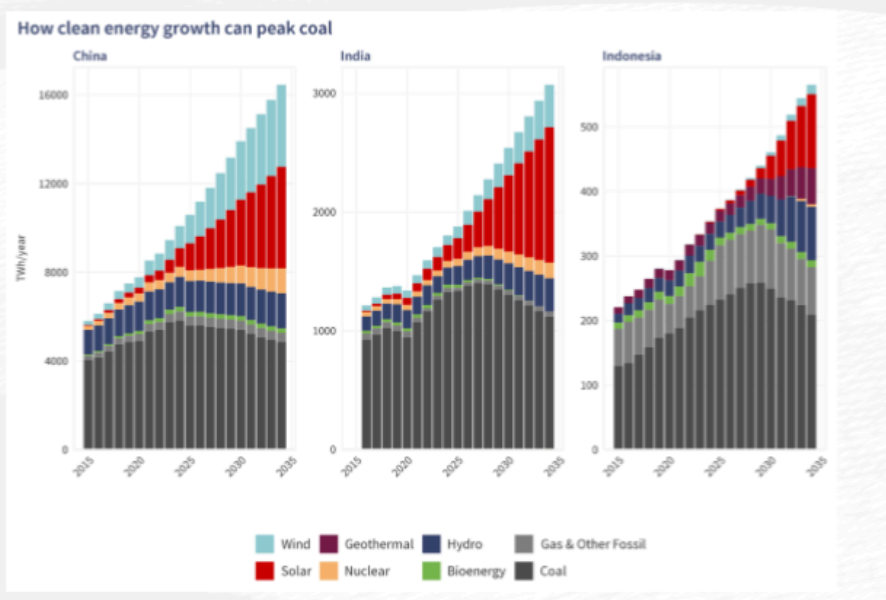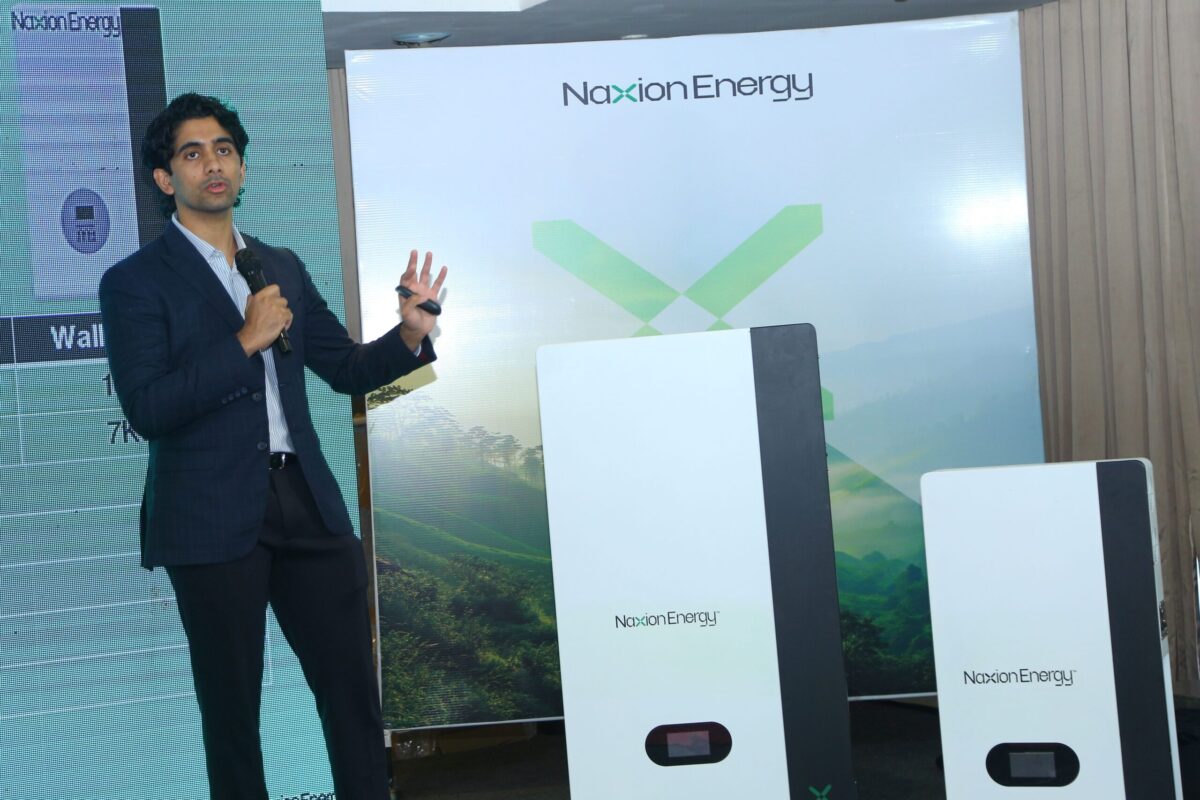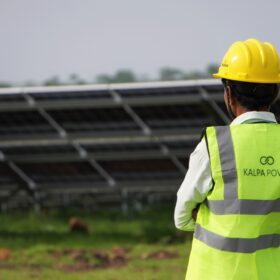According to a new analysis by the Centre for Research on Energy and Clean Air (CREA), if China maintains its current pace of clean energy energy growth and India and Indonesia achieve their stated clean energy targets, power-sector emissions across these three major coal-growth markets could begin to decline by 2030. [Coal use and emissions in the power sector will peak when growth in clean power generation systematically exceeds the average growth in power demand.]
The CREA report states that peaking coal power generation in China, India, and Indonesia would be a major breakthrough in global efforts to reduce CO2 emissions. The three markets accounted for 73% of global coal consumption in 2024. These countries have also seen the largest growth in coal consumption over the past decade and are therefore driving global consumption. Therefore, a decline in coal consumption in these markets would have global implications, not just in emissions reductions but also for countries that depend on coal export revenue.
“China has already added enough new clean electricity generation to cover all new demand growth, and power sector coal use and emissions have been falling since 2024 as a result. While the coal power decline is unlikely to be linear and may experience occasional setbacks, maintaining China’s current pace of clean energy energy growth means a coal power peak is imminent,” said Lauri Myllyvirta, Co-founder and Lead Analyst at CREA.
“Meeting India’s 500 GW of non-fossil power capacity set by Prime Minister Modi could in fact peak coal power before 2030. The country has already crossed the 50% mark well ahead of its 2030 deadline, even as electricity demand continues to rise in line with rapid economic and population growth. Strengthening grid flexibility, storage, and transmission will be key to sustaining this momentum and ensuring reliable, affordable electricity,” said Manoj Kumar, analyst at CREA.
According to the analysis, India must extend the growth momentum in renewable energy deployment beyond 2030 to sustain progress toward its targets and ensure a lasting decline in power sector emissions.
“President Subianto’s 100 GW solar program could ensure that Indonesia’s coal power generation peaks by 2030. However, the current national plans still include near-term increases in fossil fuels. The real opportunity lies in translating this vision into a concrete delivery roadmap that positions clean energy to dominate new capacity additions,” said Katherine Hasan, analyst at CREA.
The analysis identifies continued expansion of coal power as one common threat across the three markets. In all three countries, both a rapid phase-down post-peak and a long, drawn-out plateau or even a rebound in coal use are distinct possibilities. Falling back to slower renewable energy growth rates post 2030 peak could lead to missed opportunities in terms of further reducing power sector emissions.
“Unchecked coal power expansion risks creating powerful vested interests that could potentially delay the energy transition in China, India, and Indonesia. Rapid reduction in power sector emissions post coal peak would not only require maintaining pre-2030 renewable energy growth rate in all three countries but also ensuring power market and grid reforms. The total reduction in power sector CO2 emissions could be equivalent to India’s total 2019 CO2 emissions, compared to business-as-usual,” Myllyvirta added.
This content is protected by copyright and may not be reused. If you want to cooperate with us and would like to reuse some of our content, please contact: editors@pv-magazine.com.









By submitting this form you agree to pv magazine using your data for the purposes of publishing your comment.
Your personal data will only be disclosed or otherwise transmitted to third parties for the purposes of spam filtering or if this is necessary for technical maintenance of the website. Any other transfer to third parties will not take place unless this is justified on the basis of applicable data protection regulations or if pv magazine is legally obliged to do so.
You may revoke this consent at any time with effect for the future, in which case your personal data will be deleted immediately. Otherwise, your data will be deleted if pv magazine has processed your request or the purpose of data storage is fulfilled.
Further information on data privacy can be found in our Data Protection Policy.